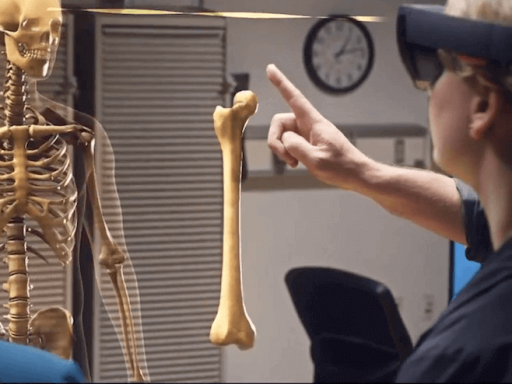Augmented, virtual, and mixed reality are all technologies opening new worlds for the human senses. While the difference between these technologies might seem arbitrary at first, it greatly determines how they could be used in healthcare. While AR lets users see the real world and projects digital information onto the existing environment, VR shuts out everything else completely and provides an entire simulation, and mixed reality is able to interact with the world while projecting information into it. Thus, AR can be used by surgeons for projecting potentially life-saving information into their eyesight during operations, VR can be used in psychiatry to treat phobias efficiently, and mixed reality is able to bring revolutionary novelties to medical education, or pre-operative surgical planning, among others.
For example, the Microsoft HoloLens opens up radically new ways for medical education as it is able to project the human body in its full size in front of med students. Thus, the organs, veins or bones will be visible accurately in 3D, and future medical professionals will be able to analyze their shape, remember their characteristics more vividly than it is possible when studying from a book. There are already some universities who plan to introduce the new technology: Case Western opened its new health education campus in collaboration with the Cleveland Clinic in 2019, where students study anatomy from virtual reality rather than cadavers.
Source: www.businessinsider.com

